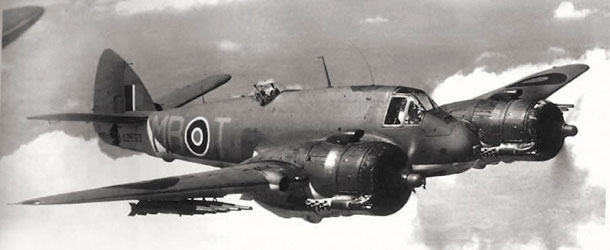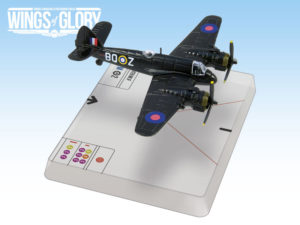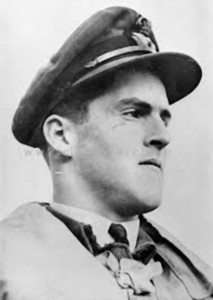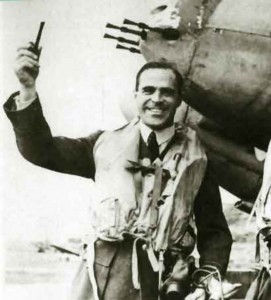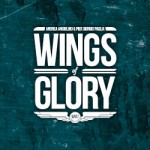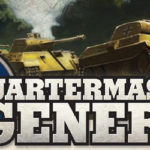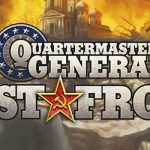In our previous article, we presented the Bristol Beaufighter aircraft. Now let’s learn something more about the pilots of the three versions included in the WW2 Wings of Glory Airplane Packs: the British Archibald McNeill Boyd (RAF), the New Zealand Michael James Herrick (RAF), and the Paul Yettvart Davoud (RAF).
Archibald McNeill Boyd
Archibald Boyd attended Trinity College, Oxford, where from January 1938 he served with the University Air Squadron - a civilian organization encouraging an interest in flying, promoting and maintaining liaison with universities about technical and research problems affecting aviation. He was called up in October 1939, and after training he was posted to No. 600 "City of London" Squadron, where he became a Night Fighter flying the Bristol Beaufighter.
He achieved his first kill on May 16th, 1941, when - flying the Beaufighter IF T4628/BQ-Z (the same represented in Wings of Glory) with his navigator, Flight Officer Glegg - he shot down a Ju88 near Devon. In January 1942, they were awarded with the Distinguished Flying Cross for flying together in numerous night operational sorties - "Sqn. Ldr. Boyd is a skillful and determined pilot, and he has destroyed three enemy aircraft. Fit. Lt. Glegg, by his great skill as observer, has largely assisted his pilot in the successes achieved. Both these officers have shown exceptional keenness and devotion to duty." By March 1942, they had claimed five victories.
In March 1943, Boyd was given command of No. 219 Squadron. After the installation of an improved radar, the unit was dispatched to the Mediterranean to provide cover for convoys crossing the sea to invade Sicily. He returned to the UK in February 1944 and ended his second tour in August, going to HQ Fighter Command as Wing Commander Night Operations until April 1945.
Boyd ended the Second World War with 10 confirmed victories, and deserved the Distinguished Service Order award on March 3rd, 1944, for his victories, the successful operations of the squadron he led during Tunisian and Sicilian campaigns and for having always displayed outstanding courage and initiative in action, together with sound administrative ability on the ground.
He was released from the RAF in February 1946. He then worked with Vickers Armstrong as a test pilot, went on to become an engineer, working on nuclear submarines, and became Chief Executive in 1961. He retired in 1981.
Michael James Herrick
Michael James Herrick was born in Hastings, New Zealand, on May, 5th 1921. He gained his pilot license at the Hawkes Bay Aero Club while still at school. In March 1939, he left New Zealand to take up a two-year cadetship at the Royal Air Force (RAF) College in Cranwell. Posted to No. 25 Squadron at the age of 18, Herrick flew the Bristol Beaufighter on night patrols with distinction during the Battle of Britain.
In September 1940, Herrick scored three victories of the four achieved by Fighter Command during night operations that month. On September 4th, he shot down two Heinkel He.111 bombers within minutes of each other - the No.25 Squadron’s first victories of the war. Nine days later, he destroyed another bomber. His achievements were recognized with the award of the Distinguished Flying Cross (DFC).
After a short period spent in New Zealand as an instructor, on June 1942 his No. 15 Squadron sailed from Wellington to Tonga, where they took over the Curtis P-40 Warhawk fighters of the USAAF No. 68 Pursuit Squadron. The squadron moved to Guadalcanal in April 1943, and Herrick assumed its command. The Japanese floatplane he shot down is credited as the first enemy aircraft destroyed by New Zealand fighters in the Pacific.
Herrick returned to the UK in January 1944, where he joined No. 305 Squadron, a Polish fighter-bomber unit, flying night operations against airfields and V-1 Flying Bomb launch sites in Europe. In February, he was awarded with his second DFC for the gallantry displayed in flying operations against the enemy in the Solomon Islands. On 16 June 1944, in his first daylight raid, headed toward Denmark with another de Havilland Mosquito fighter-bomber, his plane was intercepted and shot down by a Focke-Wulf Fw. 190 of Jagdgeschwader I and he bailed out over the sea. He died at the age 23.
Herrick was awarded a posthumous United States Air Medal for his service in the Pacific. The medal was presented to his parents in Wellington in July 1944.
Paul Yettvart Davoud
Paul Yettvart Davoud was born in US (Provost, Utah) in November 1911. He moved with his family to Ontario, Canada, in 1926. Three years later, he enlisted at Camp Borden and at the end of summer 1931 he became a provisional Pilot Officer. Graduated from Royal Military School of Canada, he was awarded the Sword of Honour as the best all-round cadet.
Davoud moved to England and obtained a permanent commission with the RAF, where he remained until 1935. Back to Canada, he worked and flew for Canadian companies until 1940. In June of 1941, he was in the UK again and was assigned the rank of Squadron Leader to organize 410 Night Fighter Squadron.
Soon after he was appointed Commanding Officer of 409 Night Fighter Squadron with the rank of Wing Commander. He destroyed his first enemy aircraft, a Dornier 217, over the North Sea in November 1941. In June of 1943, Davoud was the first Canadian to command 418 Squadron. As Commanding Officer, he flew Mosquito aircraft on night fighter/intruder operations. During the time he commanded night fighters, he was awarded the Distinguished Service Order (DSO) and the Distinguished Flying Cross (DFC).
In 1944, Group Captain Davoud assumed command of RCAF 143 Wing during the invasion of Europe. During this period, 143 Wing occupied many forward airfields and worked closely with invading forces in strikes against ground transportation and troop concentrations. Prior to leaving the RCAF, Davoud was made an officer of the Order of the British Empire (OBE). The Dutch government made him a Commander of the Order of Orange, Nassau. The French government awarded him the Croix de Guerre with Palm Leaf and the Legion of Honour. He was inducted into the Canadian Aviation Hall of Fame in 1985.
Davoud died in March 1987 in Kingston, Canada.
Information sources: WW2 Awards.com, New Zealand History Online, Hall of Valour - Temple Du Courage; Flying For Your Life, Auckland War Memorial Museum, "Beaufighter Aces of World War 2" (by Andrew Thomas, Osprey Publishing).

